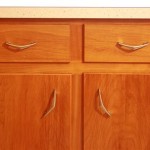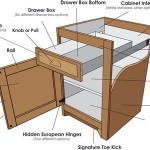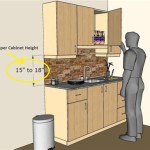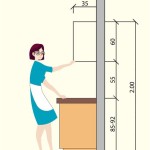How to Vinyl Wrap Kitchen Sides: A Step-by-Step Guide
Transforming the appearance of your kitchen can be a daunting task, but vinyl wrapping offers a budget-friendly and DIY-friendly solution. Vinyl wrapping can instantly update the sides of your cabinets, drawers, or appliances, providing a sleek and modern look without the need for expensive renovations.
While vinyl wrapping may seem intimidating, it's a straightforward process with a little preparation and patience. Here's a step-by-step guide to help you achieve a professional-looking vinyl wrap for your kitchen sides:
Materials Required:
- Vinyl wrap in desired color or texture
- Squeegee or credit card
- Heat gun or hair dryer
- Cleaning solution (e.g., isopropyl alcohol)
- Lint-free cloths
- Utility knife
- Masking tape (optional)
Step 1: Clean and Prepare the Surface
Thoroughly clean the surface you intend to wrap with a cleaning solution and a lint-free cloth. This step is crucial to ensure proper adhesion and prevent bubbles or imperfections. Remove any dirt, grease, or dust from the surface.
Step 2: Measure and Cut the Vinyl
Measure the area you wish to wrap and cut the vinyl accordingly, leaving about 2 inches of excess on each side. Ensure the vinyl is cut straight and precisely using a utility knife and a ruler or measuring tape.
Step 3: Apply the Vinyl
Peel away a small portion of the vinyl backing and align it with the edge of the surface you're wrapping. Use your fingers to gently press the vinyl onto the surface, gradually removing the backing as you go.
Step 4: Use a Squeegee to Remove Bubbles
Once the vinyl is applied, use a squeegee or credit card to remove any air bubbles or wrinkles. Apply firm pressure and move the squeegee in a sweeping motion from the center outwards. If you encounter stubborn bubbles, use a heat gun or hair dryer to soften the vinyl slightly and smooth it out.
Step 5: Trim the Excess Vinyl
Once the vinyl is applied and smoothed out, use a utility knife to trim the excess around the edges. Cut carefully to avoid damaging the surface or the vinyl itself. You can use a hairdryer to soften the vinyl and make trimming easier.
Step 6: Seal the Edges
To enhance durability and prevent peeling, you can seal the edges of the vinyl with a heat gun or hair dryer. Apply heat while pressing down on the edges with a squeegee or cloth. This will create a strong bond between the vinyl and the surface.
Step 7: Admire Your New Kitchen
Once the vinyl is sealed, stand back and admire your transformed kitchen. Enjoy the updated and stylish look of your cabinets, drawers, or appliances without breaking the bank or hiring a professional.
Tips for a Successful Vinyl Wrap:
- Use high-quality vinyl specifically designed for wrapping.
- Practice your technique on a small, inconspicuous area before tackling larger surfaces.
- Don't rush the process. Take your time to measure, cut, and apply the vinyl carefully.
- If you encounter any difficulties, don't hesitate to seek help from a professional installer.
- Keep the wrapped surface clean by wiping it down with a damp cloth and avoid using abrasive cleaners.

How To Vinyl Wrap Kitchen Doors Checkatrade

Tutorial How To Wrap A Kitchen Worktop With Cover Styl Adhesive S

How To Wrap Your Kitchen In Vinyl Home

How To Vinyl Wrap Kitchen Doors Checkatrade

How To Vinyl Wrap Your Kitchen Benchtop

Self Adhesive Vinyl Wrap For Kitchen Worktops Dc Fix Marble White

Tutorial How To Wrap A Kitchen Worktop With Cover Styl Adhesive S

Self Adhesive Vinyl Wrap For Kitchen Worktops Dc Fix Marble Grey
Revolutionize Your Kitchen With Vinyl Countertop Wrapping Service Iconickitchenwraps Ie

Dc Fix Concrete Grey Self Adhesive Vinyl Kitchen Wrap Wraps








